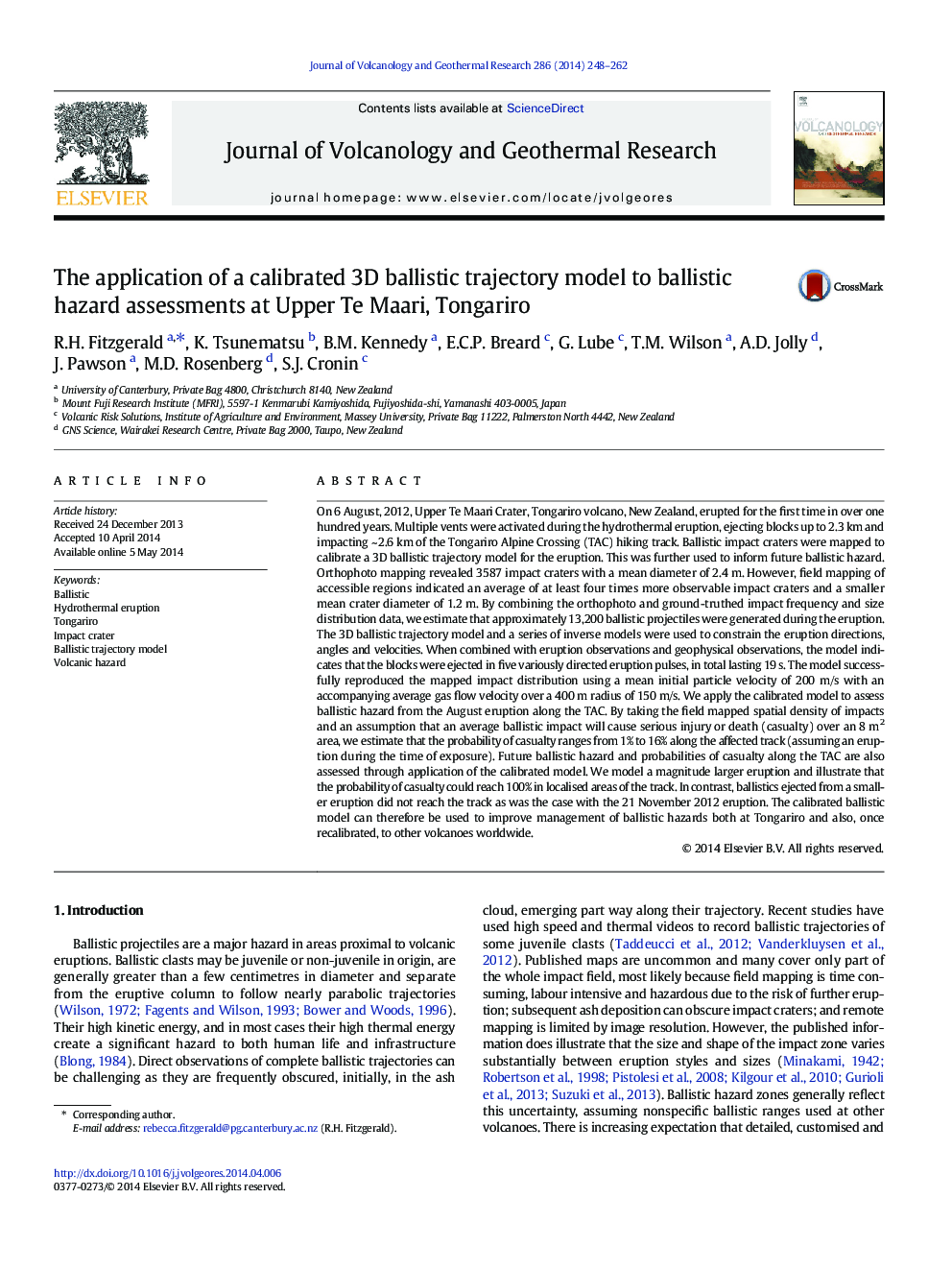| کد مقاله | کد نشریه | سال انتشار | مقاله انگلیسی | نسخه تمام متن |
|---|---|---|---|---|
| 6439674 | 1638336 | 2014 | 15 صفحه PDF | دانلود رایگان |

- Field mapping indicated four times more ballistic impacts than mapping by orthophoto.
- Ballistic impact mapping revealed multiple sources and pulses of eruption.
- Inverse modelling reproduced the mapped ballistic impact distribution.
- Probability of casualty on the TAC reached 16% in the August 2012 Te Maari eruption.
- Future ballistic hazard and risk can be analysed using this calibrated model.
On 6 August, 2012, Upper Te Maari Crater, Tongariro volcano, New Zealand, erupted for the first time in over one hundred years. Multiple vents were activated during the hydrothermal eruption, ejecting blocks up to 2.3Â km and impacting ~Â 2.6Â km of the Tongariro Alpine Crossing (TAC) hiking track. Ballistic impact craters were mapped to calibrate a 3D ballistic trajectory model for the eruption. This was further used to inform future ballistic hazard. Orthophoto mapping revealed 3587 impact craters with a mean diameter of 2.4Â m. However, field mapping of accessible regions indicated an average of at least four times more observable impact craters and a smaller mean crater diameter of 1.2Â m. By combining the orthophoto and ground-truthed impact frequency and size distribution data, we estimate that approximately 13,200 ballistic projectiles were generated during the eruption. The 3D ballistic trajectory model and a series of inverse models were used to constrain the eruption directions, angles and velocities. When combined with eruption observations and geophysical observations, the model indicates that the blocks were ejected in five variously directed eruption pulses, in total lasting 19Â s. The model successfully reproduced the mapped impact distribution using a mean initial particle velocity of 200Â m/s with an accompanying average gas flow velocity over a 400Â m radius of 150Â m/s. We apply the calibrated model to assess ballistic hazard from the August eruption along the TAC. By taking the field mapped spatial density of impacts and an assumption that an average ballistic impact will cause serious injury or death (casualty) over an 8Â m2 area, we estimate that the probability of casualty ranges from 1% to 16% along the affected track (assuming an eruption during the time of exposure). Future ballistic hazard and probabilities of casualty along the TAC are also assessed through application of the calibrated model. We model a magnitude larger eruption and illustrate that the probability of casualty could reach 100% in localised areas of the track. In contrast, ballistics ejected from a smaller eruption did not reach the track as was the case with the 21 November 2012 eruption. The calibrated ballistic model can therefore be used to improve management of ballistic hazards both at Tongariro and also, once recalibrated, to other volcanoes worldwide.
Journal: Journal of Volcanology and Geothermal Research - Volume 286, 1 October 2014, Pages 248-262